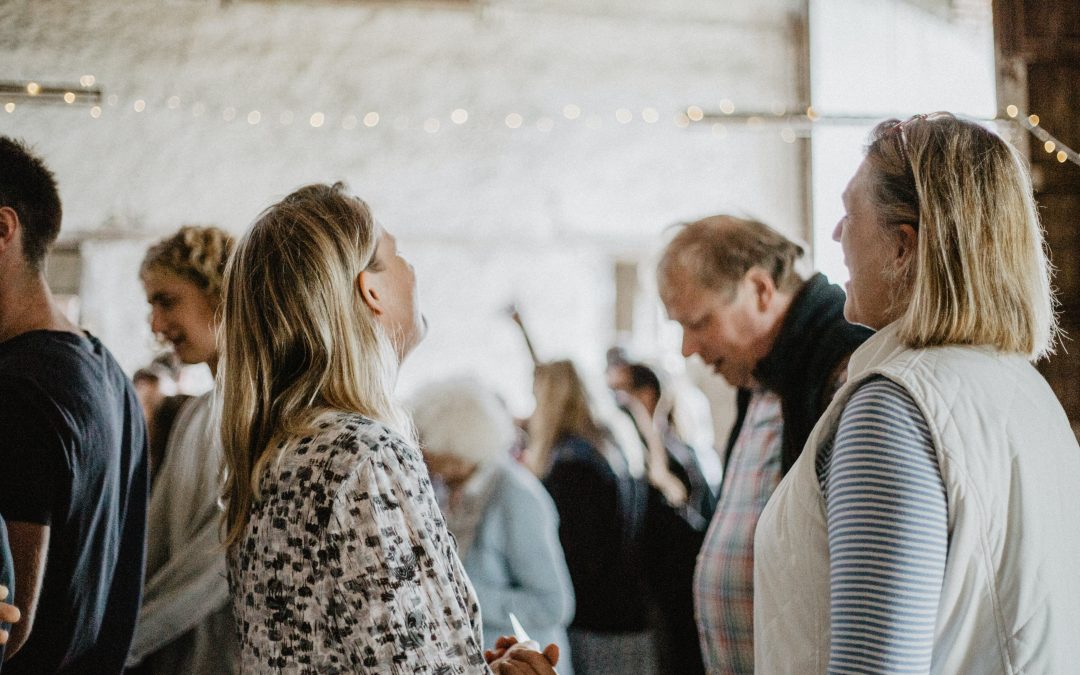Last week my colleague and I attended a Chamber Mixer at a recently reopened local business. The April afternoon was sunny and warm, and the smell of spring was in the air. It was the first in-person networking event we had attended “post-COVID,” and also our first opportunity to visit a popular brewery that had literally risen from the ashes. Following a devastating fire that had nearly leveled the business, the newly built and re-imagined venue was an exciting and promising location to re-enter the world of face-to-face networking.
After nearly two years of conducting every aspect of business from behind a desk in a closed office, breaking out and personally interacting with peers and cultivating connections was freeing. The mood was bright, morale was high, and the business-to-business community was eager to engage.
During the three hours we spent networking, we successfully boosted our brand recognition, cultivated three potential new accounts and scheduled two consultations, supporting the contention that it is possible to make more progress in one night than a week of social media!
In-person Communication
The importance of face-to-face meetings has long been a historical reality in business, accounting for the popularity of mixers, events, breakfast meetings etc. Although these interactions might be difficult to quantify, deals and sales get made, relationships are created or re-ignited, and morale increases when people meet and greet. Looking someone in the eye, shaking their hand, and assessing their body language is intuitive and highly effective.
Studies and reports reveal that non-verbal communication comprises between 70% and 93% of all communication. Subtle but telling messaging can tend to get lost in the process of communicating via digital and virtual channels. While the constraints of COVID have forced us to adapt to what has evolved into a flexible hybrid business model, there is no real substitute for in-person interaction. Whether it is a social or business situation, critical aspects of communication are conveyed and interpreted non-verbally.
“Experts have found that we respond to thousands of nonverbal cues and behaviors every day, including postures, facial expressions, eye gaze, gestures, and tone of voice. From our handshakes to our hairstyles, nonverbal details reveal who we are and impact how we relate to other people.” https://www.verywellmind.com/types-of-nonverbal-communication-279539
Top Seven “telling” Non-Verbal Communication Cues:
- Facial expressions: The human face is extremely expressive. Facial expressions for happiness, sadness, anger, surprise, fear, and disapproval are universal.
- Tone of Voice: It’s not just what you say -it’s how you say it.
- Body movement and posture: The way you move and carry yourself communicates valuable information – posture, bearing, stance, and subtle movements.
- Gestures: Gestures enhance messaging but can also be misinterpreted. Be mindful.
- Eye Contact: The visual sense is dominant for most people, therefore eye contact is an especially important nonverbal communication.
- Touch: We communicate a great deal through touch e.g., handshake, hugs, pats etc.
- Space: Physical space conveys many different nonverbal messages, including signals of affection, aggression, or dominance. e.g. “Close Talkers.”
Networking Preparedness
It is natural to the human condition to unconsciously assess our interactions with other people. We either interpret and react right on the spot or deliberate after thoughtful consideration, depending on the situation. While in-person networking taps into our unconscious behaviors, our conscious behaviors can make or break successful business opportunities. In other words – be prepared.
- Make Sure your Marketing Collaterals Are Current: Before you go to the event or appointment, make sure your website is up-to-date. If you can, add pages such as portfolios, featured projects, or add case studies to highlight your achievements. In these unpredictable times, you need to seize every opportunity to make a strong impression. And – don’t forget your business cards! Yes – they are still relevant and valuable.
- Set A Goal: Come away with one significant potential and realistic commitment, agreement, appointment, or goal. While my colleague and I were walking through the doors of the April Mixer, we agreed on a goal to meet and hand out our business cards to a specific number of people. When we walked out – we had both met our goal!
- Optimize your Time and Energy: If you are able to review the attendees prior to the event, do a little research and evaluate who you might want to spend time with. This includes businesses that may be potential clients, provide complementary services or collaborations, and people you enjoy spending time with and who might have valuable connections.
In Conclusion
Our time away from in-person social interaction has shined a spotlight on the critical importance and implications of non-verbal communication. After too long behind a desk, talking to a screen, it is great to be out and about, but we can do so with a greater appreciation of what it means to mix and mingle in person.
When you do get back out there…take every opportunity to enjoy a genuine smile and laugh – it’s contagious!
https://www.helpguide.org/articles/relationships-communication/nonverbal-communication.
hhttps://www.lifesize.com/en/blog/speaking-without-words/#:~:text=There%20have%20been%20a%20number,Mehrabian%20in%20the%201960s.


